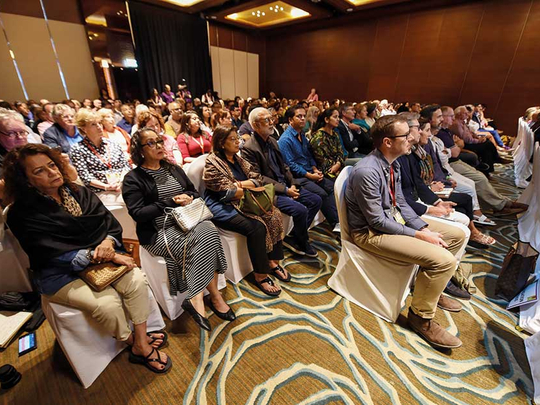
Dubai: India’s claim to one of the world’s most coveted diamonds — the Kohinoor — is the strongest, historical documents show, said a world-renowned historian and travel writer on Friday.
William Dalrymple, who penned ‘Kohinoor: The History of the World’s Most Infamous Diamond’ with British TV journalist Anita Anand, traced what he described as the true history of the famous gemstone on the second day of the 10th Emirates Airline Festival of Literature.
The magnificent gem is confirmed as one of the biggest diamonds on the planet with a weight of 105.6 carats (21.12 grams).
- William Dalrymple | Author
It is now part of the British Crown Jewels.
In a packed ballroom, Dalrymple quashed “the story everyone thinks they know” about the Kohinoor, which is also described in detail in the book and presented how the diamond exchanged hands either by bloodshed, trickery, or sheer ‘generosity’, depending on who you ask.
Currently, the Kohinoor diamond is set on the Maltese cross on the Queen Mother’s purple velvet crown on display at the Tower of London.
Dalrymple traced the gem’s history, back to ancient times when India was the only known source of diamonds for centuries before the discovery of new world mines in 1725 in Brazil.
“The more we probed primary sources, the less substantial the story of this diamond became. The hardest object on earth turned out to have an incredibly frail history,” Dalrymple said.
Kohinoor, which means ‘Mountain of Light’, is in no way a purveyor of light but was deeply mired in centuries of torture, murder, mutilation, bloodshed and calamity for its bearers and owners.
It was an object of obsession for generations and generations of rulers who were capable of committing all sorts of evil, that even pitted father against son in the most horrid way imaginable.
Dalrymple and Anand traced more than four centuries of Indian history and detailed the rise and fall of empires from a 10-year-old maharaja, through the hands of the East India Company to the stone’s current controversial setting, the crown of Queen Elizabeth.
Currently, six parties have laid claim to the diamond — India, Pakistan, Bangladesh, Iran, Afghanistan and the Taliban.
The stone had the capacity for igniting regional conflicts, even possibly until now. When asked how to resolve the issue, Dalrymple said: “There is no easy solution. It almost certainly came from India so India’s claim is certainly the strongest of the six.”
“According to the UN rule about returning loot, it only operates from the 20th century. At the moment, there is no legal requirement and the diamond was handed over by the Sikh government in a surrender document.”










